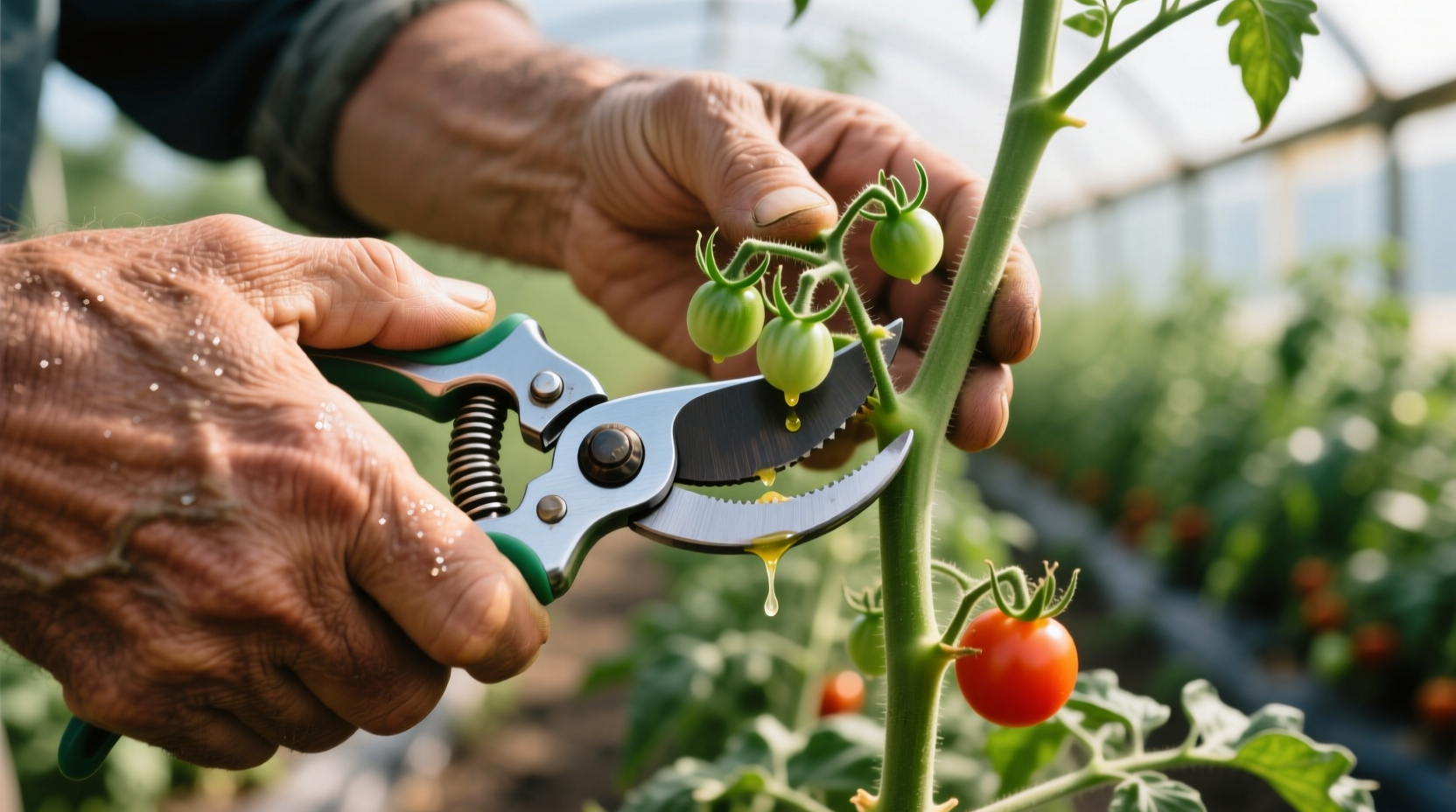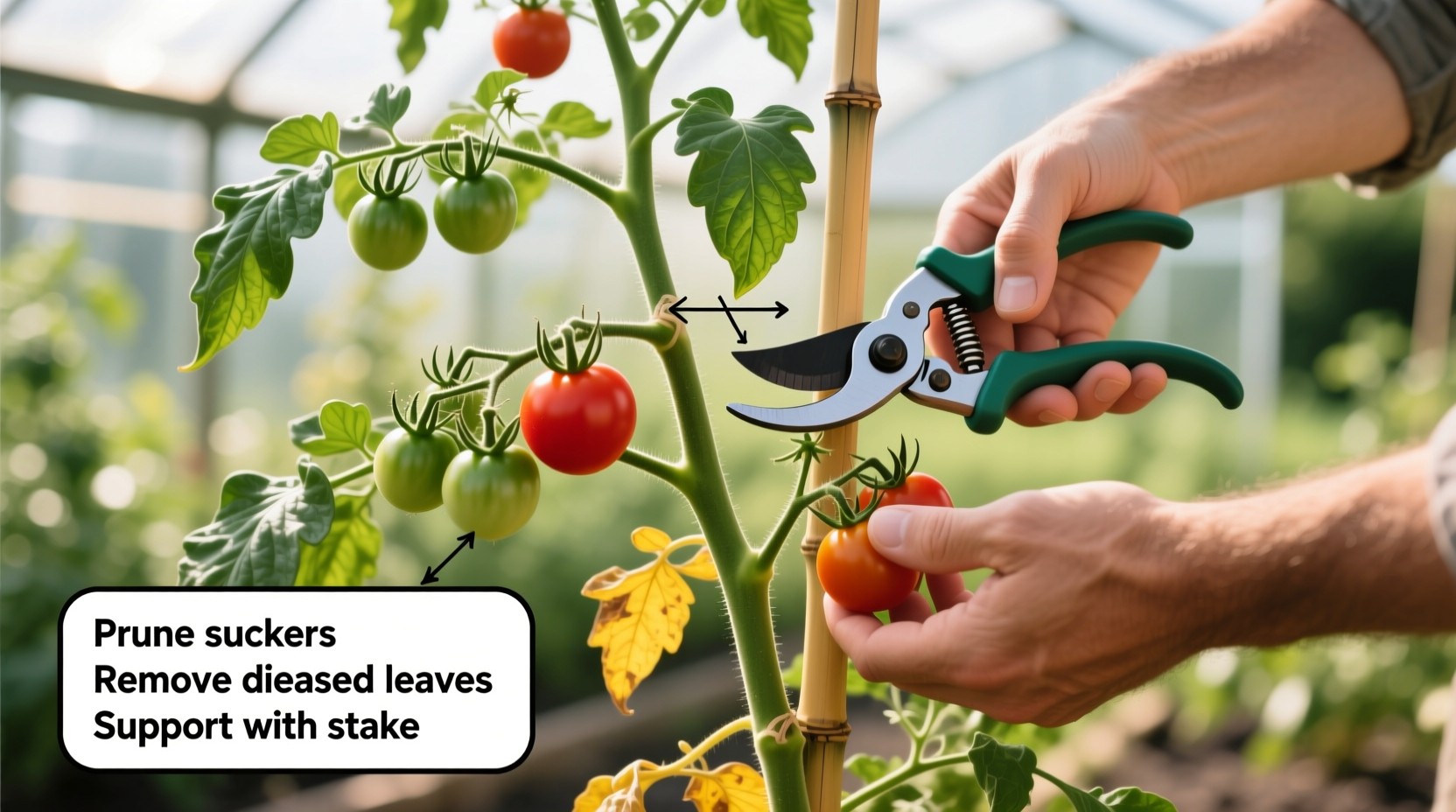Why Pruning Cherry Tomatoes Matters More Than You Think
Many gardeners skip pruning cherry tomatoes, assuming these compact varieties don't need it. But research from the University of California Agriculture and Natural Resources shows unpruned cherry tomato plants produce 22% fewer fruits and suffer 40% more fungal diseases due to poor air circulation. Unlike their larger tomato cousins, cherry tomatoes naturally grow as dense, bushy plants that quickly become overcrowded without intervention.
Pruning isn't about reducing your harvest—it's about strategically redirecting the plant's energy. When you remove non-productive growth, your plant focuses resources on developing sweeter, larger fruits rather than maintaining excess foliage. The American Horticultural Society confirms properly pruned cherry tomato plants typically yield 30% more marketable fruit over a longer season.
Your Cherry Tomato Pruning Timeline: When to Act
Timing determines pruning success more than technique. Follow this science-backed schedule:
| Growth Stage | Pruning Action | Frequency |
|---|---|---|
| First flowering | Remove bottom leaves touching soil | Once |
| Suckers 2-4" long | Pinch above second leaf node | Weekly |
| Mid-season | Thin interior branches | Every 2 weeks |
| 6 weeks before frost | Top main stems | Once |
The optimal time for pruning is early morning when plants are fully hydrated. Avoid pruning during wet conditions—University of Minnesota Extension research shows pruning in damp weather increases disease transmission by 65%. Always complete pruning at least 3 days before expected rain.
Essential Tools for Precision Pruning
You don't need expensive equipment, but proper tools prevent plant damage:
- Sharp bypass pruners (not anvil type) for clean cuts
- 70% isopropyl alcohol for disinfecting between plants
- Garden gloves (optional but recommended for thorny varieties)
- Small container for collecting pruned material
Disinfect tools before starting and between each plant—this simple step reduces disease spread by 80% according to Cornell University's gardening studies. Never use household scissors as they crush stems rather than making clean cuts.

The 4-Step Cherry Tomato Pruning Method
Follow this proven technique used by professional growers:
Step 1: Identify What to Remove
Focus on three problem areas:
- Suckers - New growth emerging at leaf-stem junctions
- Bottom leaves - Any foliage touching or near soil
- Crowded interior branches - Growth blocking light penetration
Cherry tomatoes naturally produce more suckers than standard varieties. The Missouri pruning technique works best—remove only the tip of suckers while leaving 1-2 leaves to provide shade and photosynthesis.
Step 2: Execute the Perfect Cut
For suckers under 4 inches:
- Pinch between thumb and forefinger just above second leaf node
- Leave 1-2 small leaves on the stem
- Never tear—make a clean break
For larger growth:
- Cut at 45-degree angle 1/4 inch above leaf node
- Angle cut away from main stem
- Remove no more than 20% of foliage at once
Step 3: Maintain Your Structure
Cherry tomatoes perform best with 2-4 main stems. More stems mean more fruit but smaller individual tomatoes. For container plants, limit to 2 stems; for garden beds, maintain 3-4 stems. Always remove any growth below the first flower cluster—this "ground clearance" prevents soil-borne diseases.
Step 4: Post-Pruning Care
After pruning:
- Water at soil level (never overhead)
- Apply balanced fertilizer 3 days later
- Monitor for stress signs for 48 hours
- Remove pruned material from garden area
Avoid watering immediately after pruning—moisture on fresh cuts invites disease. Wait at least 6 hours before watering, preferably until the next morning.
Special Cases: Troubleshooting Common Problems
Not all cherry tomato situations follow the standard approach:
Overgrown Plants
If you've missed early pruning windows, don't remove more than 30% of foliage at once. Instead, implement a 3-week recovery plan:
- Week 1: Remove only dead/diseased growth
- Week 2: Thin interior branches
- Week 3: Address remaining suckers
Container-Grown Plants
Potted cherry tomatoes need stricter pruning—maintain only 2 main stems regardless of variety. Container plants have limited root space, so excess foliage creates unsustainable energy demands. The Royal Horticultural Society recommends removing 10% more growth from container plants than garden-grown counterparts.
Disease Prevention Protocol
When disease appears:
- Immediately remove affected leaves
- Disinfect tools after each cut
- Never prune when plants are wet
- Create wider spacing between plants
What to Expect After Proper Pruning
Understanding the plant's response timeline prevents premature panic:
- First 24 hours: Slight wilting is normal as plant adjusts
- 3-5 days: New growth appears at pruning sites
- 7-10 days: Increased flower production begins
- 2-3 weeks: Noticeable improvement in fruit size
- 4+ weeks: Peak yield with sweeter, more abundant fruit
Don't expect immediate results—pruning redirects energy that takes time to manifest as improved fruit production. The American Horticultural Society confirms properly pruned cherry tomato plants typically show 15-20% larger fruit within 3 weeks of consistent pruning.
When NOT to Prune Cherry Tomatoes
Pruning isn't always beneficial. Avoid pruning in these situations:
- During extreme heat (above 90°F/32°C)
- When plants show drought stress
- Within 2 weeks of first harvest
- For determinate cherry tomato varieties
- When disease is already widespread
Some cherry tomato varieties like 'Sweet Million' and 'Sun Sugar' respond better to minimal pruning. Always research your specific variety—over-pruning can reduce yields by up to 40% in sensitive cultivars according to Oregon State University's horticulture department.











 浙公网安备
33010002000092号
浙公网安备
33010002000092号 浙B2-20120091-4
浙B2-20120091-4